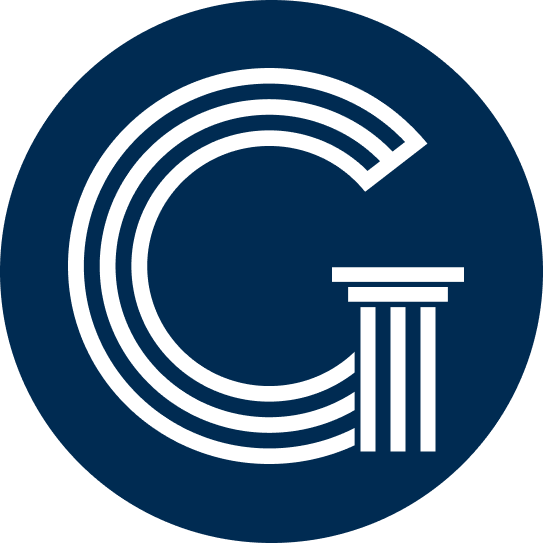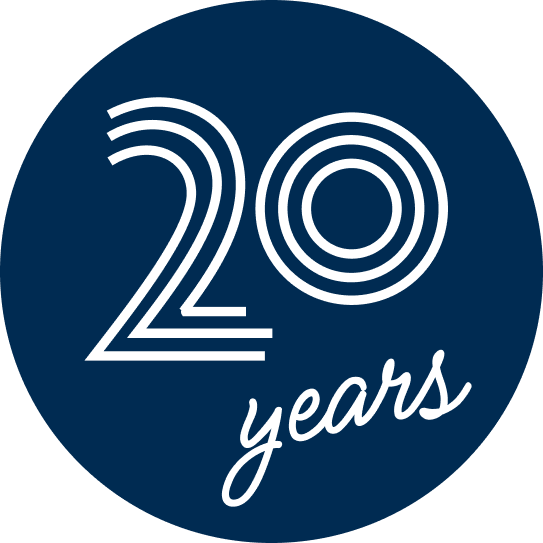- Concord Campus - (925) 687-9555
- Fresno Campus - (559) 222-1903
- Modesto Campus - (209) 521-1821
- Sacramento Campus - (916) 588-2060
- San Jose Campus - (408) 384-7050
- Van Nuys Campus - (747) 200-4567
- Concord Campus - (925) 687-9555
- Fresno Campus - (559) 222-1903
- Modesto Campus - (209) 521-1821
- Sacramento Campus - (916) 588-2060
- San Jose Campus - (408) 384-7050
- Van Nuys Campus - (747) 200-4567
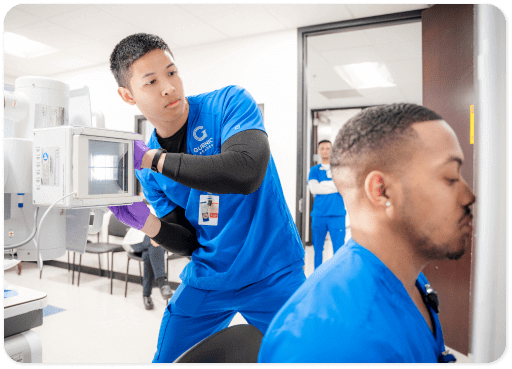
- Concord, CA
- Sacramento, CA
- Welcome
- About the Program
- Program Description
- Goals and Objectives
- Learning Outcomes
- Length and Schedule
- Requirements
- Admissions Point System
- Career Services
- Program Outline
- Clinical Training
- Job Outlook and Salary
- Program Effectiveness Data
- Accreditation and Approval
- Certification
- Financial Aid
- Testimonials
- FAQ
- Apply now
- External Resources
24 Months Program*
Job Placement Assistance
Veteran and Military Benefits
*94 Approved Instructional Weeks
| Student Tuition Recovery Fund (Non-Refundable) | $0.00 |
| Registration Fee (Non-Refundable) | $100.00 |
| Books (Non-Refundable, if accessed) | $725.00 |
| Tuition Fee | $68,402.00 |
|
TOTAL PROGRAM COST* *Program Fees are subject to change |
$69,227.00 |
| Student Tuition Recovery Fund (Non-Refundable) | $0.00 |
| Registration Fee (Non-Refundable) | $100.00 |
| Books (Non-Refundable, if accessed) | $725.00 |
| Tuition Fee | $68,402.00 |
|
TOTAL PROGRAM COST* *Program Fees are subject to change |
$69,227.00 |
Welcome Message from the Program Directors
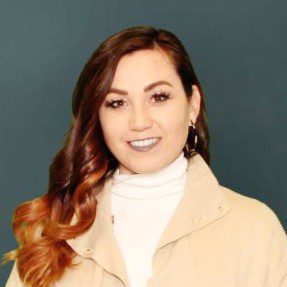
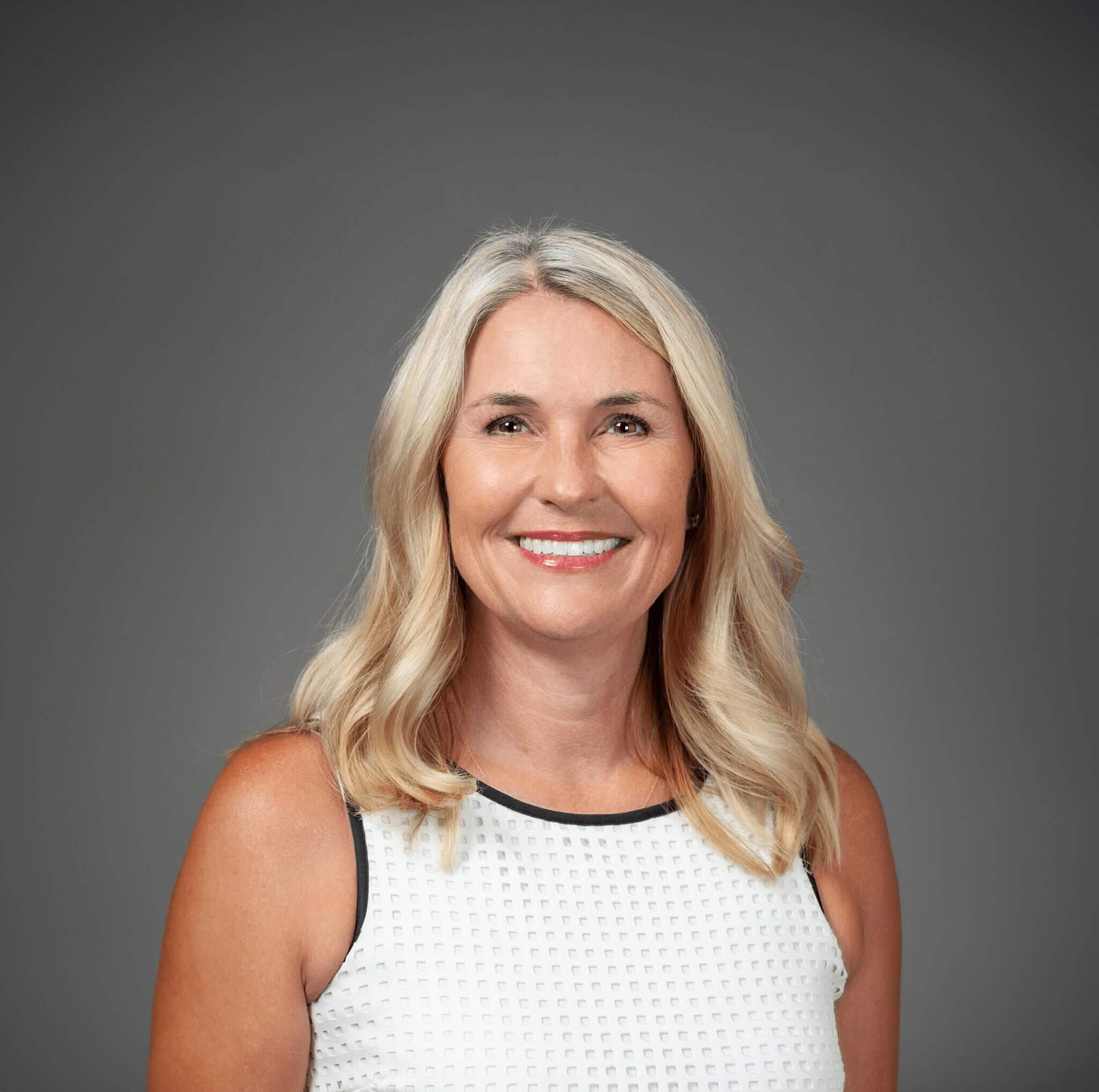
We are so excited you are interested in pursuing a profession in imaging sciences here at Gurnick Academy of Medical Arts. Congratulations on making an excellent career choice. The A.S. in Radiologic Technology program is offered at either the Sacramento or Concord campus. As a future Radiologic Technologist, you will perform all x-ray duties under supervision in hospitals and critical care facilities as you complete our program.
We pride ourselves on having a diverse student population dedicated to learning and enhancing their professional and clinical skills. Our experienced Imaging faculty has an unwavering education to your success, providing a dynamic educational experience in the classroom and the clinical environment. The clinical training facilities with which we are affiliated are located throughout Sacramento, East Bay, and surrounding areas and include Level 1 and 2 trauma centers and outpatient imaging centers to ensure you receive the best, well-rounded, and robust educational experience.
Our Northern California programs pride ourselves on being some of the top-performing schools in the nation. This is evidenced by our graduation, completion, and employment statistics posted on the Gurnick official website under the program informational page.
Our program at each campus is very vigorous and challenging. However, the reward of completing the AS in Radiologic Technology program is life-changing for our graduates as they begin their imaging professions. If you are ambitious, well-organized, and driven toward a career in medical imaging, we hope you will join us in reaching that new career.
We look forward to meeting you!
About the A.S. in Radiologic Technology Program
Program Mission
Gurnick Academy of Medical Arts and our A.S. in Radiologic Technology Program faculty are dedicated to providing qualified individuals with optimal learning experiences. We strive to provide the medical imaging community with competent radiologic technologists. They will demonstrate the highest standards of ethics, professionalism, clinical competency, and critical thinking while providing compassionate and respectful patient care.
The program’s philosophy ensures that graduates perform radiologic procedures as defined by the American Society of Radiologic Technologists Practice Standards. Graduates of the A.S. in Radiologic Technology Program will be taught professionalism and ethics consistent with the Principles of Professional Conduct for Radiologic Technologists and Code of Ethics.
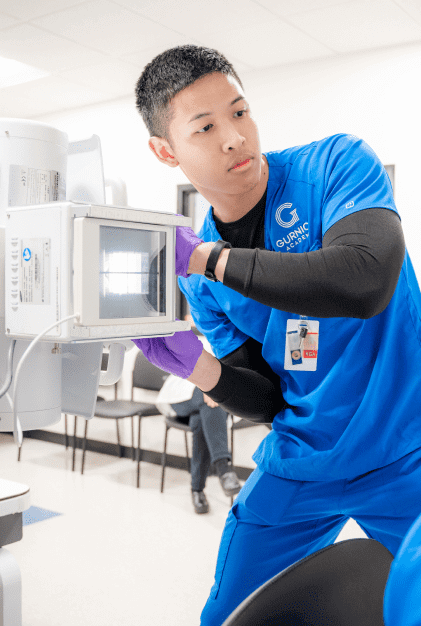

A.S. in Radiologic Technology Program Description
A Radiologic Technologist is a person trained in the “art and science” of creating images of the human body using ionizing radiation. The radiologic technologist works closely with the radiology doctor (radiologist) and other physicians and plays a vital role as a professional member of the medical team. Technologists work in hospitals’ general radiography, surgery, trauma, pediatrics, clinics, doctors’ offices, and imaging centers.
The role of radiologic science in medicine is continually growing. New applications and imaging equipment are in a constant state of development. The continued growth and development of imaging depend on highly qualified and well-trained radiologic technologists.
Some clinical rotations and radiographic examinations are deemed “gender-specific,” such as mammography and the hysterosalpingogram (HSG). While mammography is generally performed on females, the HSG is an examination conducted exclusively on female patients.
Male students should understand that they may not be allowed to observe or perform these examinations because of their sensitivity. Didactic information on these examinations will be provided to all students. However, clinical experience in these examinations may be limited to only female students.
Program Goals and Objectives
Graduate students with the clinical competence required to be entry-level technologists.
Produce students who will demonstrate effective interpersonal skills with the entire healthcare team and the public.
Enable students to employ appropriate critical thinking and problem-solving skills to be entry-level technologists in the clinical setting.
A.S. in RT Program Student Learning Outcomes
Upon completion of the program, students are expected to be able to:
- Demonstrate the positioning skills of an entry-level technologist.
- Evaluate images for diagnostic quality.
- Employ effective communication skills with the healthcare team.
- Utilize communication skills with the patients and the public.
- Adapt to patients’ conditions that deviate from routine exams.
- Follow proper safety and ALARA practices for routine and non-routine exams.
Students will establish a plan for professional development and career enhancement upon graduation.
Program Information, Length, and Schedule
*(94 Approved instruction Weeks)
The program information, length, and schedule may change. Please read the accompanying Catalog and Addendum for changes and updates. Check with an admission advisor for details. Gurnick Academy of Medical Arts’ Radiologic Technology program provides a library and classrooms with media teaching aids, textbooks, journals, periodicals, anatomical charts, phantoms, and energized lab equipment.
The Radiologic Technology program is an Associate of Science degree program. The student will receive didactic, laboratory, and clinical experience in affiliated medical facilities. The Instructor-to-Student ratio is 1:10 in the laboratory, 1:30 during residential lectures, 1:25 during online lectures, and 1:1 during clinical externships.
Classes may be scheduled Monday through Sunday. Students will attend an average of forty (40) hours per week of instruction, including didactic, labs, and clinical. Clinical activities may be held on weekdays or weekends, and shifts may include day, evening, or graveyard as the clinical site requires. Didactic courses are held between 8:00 AM to 8:00 PM.
The program’s affiliated clinical sites hold current state-issued certificates as approved clinical sites. The clinical sites provide supervised clinical instruction in the patient care setting. All clinical sites employ radiologic technologists and supervisors/operators (doctors) who hold certification from the State of California Radiologic Health Branch.
A.S. in Radiologic Technology Academic Calendar 2022-2024
A.S. in Radiologic Technology Academic Calendar 2023-2025
A.S. in Radiologic Technology Academic Calendar 2024-2026
Requirements
- Admission Requirements
- Performance Requirements
- Graduation Requirements
Please review the following requirements: General Admission Requirements for all programs.
Applicants must:
- Submit original transcripts from the registrar at an educational institution—for applicants requesting credit granting for some/all General Education courses. Copies are not accepted. All coursework must be completed and given a “C” grade or better. Anatomy and Physiology I with Laboratory must be finished within the last five (5) years. All credit granting is subject to the approval of the Program Director or Program Coordinator. Please allow seven (7) days for review.
- Submit a one-page essay in APA format that includes the following:
- Statement of why you want to join the modality.
- The essential functions and role of a technologist in this field.
- Preparation to become successful in this program.
- APA Title page and sources used to prepare for the essay (title page and sources can be on a separate page).
- Applicants who possess a current State of California Limited Permit (License) in Chest, Extremities, and Torso Skeletal will receive credit granting for a portion of the RT program.
- Gurnick Academy of Medical Arts graduates of the XTMAS program who have taken the state exam and are pending the results can enroll as provisional students into the A.S. in RT program. If the graduate fails to earn a license in all three categories listed above, the student will be dropped from the A.S. in RT program for failing to meet all the admission requirements.
Please review the following requirements: General Performance Requirements for all programs.
Each program has physical and non-physical requirements to ensure student and patient safety and welfare. Students (check with an admission advisor if applicable) must be able to do the following:
A.S. in RT students must have the following abilities:
- Lift over 50 pounds (22.68 kilograms).
- Be able to push and pull routinely.
- One (1) pound (0.45 kilograms)—five (5) pounds (2.27 kilograms) frequently—image receptors, lead aprons
- 20 pounds (9.07 kilograms)—70 pounds (31.75 kilograms) occasionally—patient transfers and patient positioning
- Hear sufficiently to assess patient needs and communicate verbally with other healthcare providers.
- Have full use of arms, hands, and wrists.
- Must be able to move quickly on the feet.
- Possess adequate visual acuity to review radiographs in varying brightness levels.
- Stand and walk on your feet 80% of the time.
- Reach at, or above, shoulder level for 90% of work time.
- Bend or flex the upper trunk forward to 45 degrees and the lower torso into a squatting position.
- Rotate the upper trunk up to 30 degrees to the right and left.
- Work compassionately and effectively with sick patients.
A.S. in RT students must have sufficient strength, motor coordination, and manual dexterity to:
- Transport, move, lift, and transfer patients from a wheelchair or cart to an X-ray table or a patient bed.
- Move, adjust, and manipulate various radiographic equipment, including portables and C-arm equipment physical transportation.
- Complete examinations on the patient according to established policies and procedures with speed and accuracy.
A.S. in RT students must also be capable of:
- Handling stressful situations related to technical and procedural standards and patient care situations.
- Providing physical and emotional support to the patient during the radiographic procedures.
- Ability to respond to situations requiring first aid and provide emergency care to the patient without or until the physician arrives.
- Communicating verbally in an effective manner to direct patients during radiographic examinations.
- Visually recognizing anatomy on the computer monitor.
- Reading and interpreting patient charts and requisitions for radiographic examinations.
- Respond to warning sounds, machine alarms, and calls for help.
A.S. in RT students must have the mental and intellectual capacity to:
- Calculate and select proper technical factors according to the individual needs of the patient and the requirements of the procedure’s standards of speed and accuracy.
- Review and evaluate the recorded images on a computer monitor and archiving system to identify patient pathology, if present, accurate positioning, technical factors for completion of a diagnostic examination, and other appropriate and pertinent technical qualities.
- Cope with heavy workloads, demanding patients, and life-threatening clinical situations.
- Behave in an ethical, sound, competent, compassionate, and professional manner in the classroom and the clinic.
The following requirements must be met for a student to graduate from the Radiologic Technology program at Gurnick Academy of Medical Arts:
- The successful completion of all program courses and hours.
- All financial obligations, including tuition and textbook charges, have been met.
- The student must complete and verify the minimum clinical competencies defined by the American Registry of Radiologic Technologists® (ARRT®).
- Students must have acquired an Associate Degree before taking the ARRT® exam.
Please review the following requirements: General Admission Requirements for all programs.
Applicants must:
- Submit original transcripts from the registrar at an educational institution—for applicants requesting credit granting for some/all General Education courses. Copies are not accepted. All coursework must be completed and given a “C” grade or better. Anatomy and Physiology I with Laboratory must be finished within the last five (5) years. All credit granting is subject to the approval of the Program Director or Program Coordinator. Please allow seven (7) days for review.
- Submit a one-page essay in APA format that includes the following:
- Statement of why you want to join the modality.
- The essential functions and role of a technologist in this field.
- Preparation to become successful in this program.
- APA Title page and sources used to prepare for the essay (title page and sources can be on a separate page).
- Applicants who possess a current State of California Limited Permit (License) in Chest, Extremities, and Torso Skeletal will receive credit granting for a portion of the RT program.
- Gurnick Academy of Medical Arts graduates of the XTMAS program who have taken the state exam and are pending the results can enroll as provisional students into the A.S. in RT program. If the graduate fails to earn a license in all three categories listed above, the student will be dropped from the A.S. in RT program for failing to meet all the admission requirements.
Please review the following requirements: General Performance Requirements for all programs.
Each program has physical and non-physical requirements to ensure student and patient safety and welfare. Students (check with an admission advisor if applicable) must be able to do the following:
A.S. in RT students must have the following abilities:
- Lift over 50 pounds (22.68 kilograms).
- Be able to push and pull routinely.
- One (1) pound (0.45 kilograms)—five (5) pounds (2.27 kilograms) frequently—image receptors, lead aprons
- 20 pounds (9.07 kilograms)—70 pounds (31.75 kilograms) occasionally—patient transfers and patient positioning
- Hear sufficiently to assess patient needs and communicate verbally with other healthcare providers.
- Have full use of arms, hands, and wrists.
- Must be able to move quickly on the feet.
- Possess adequate visual acuity to review radiographs in varying brightness levels.
- Stand and walk on your feet 80% of the time.
- Reach at, or above, shoulder level for 90% of work time.
- Bend or flex the upper trunk forward to 45 degrees and the lower torso into a squatting position.
- Rotate the upper trunk up to 30 degrees to the right and left.
- Work compassionately and effectively with sick patients.
A.S. in RT students must have sufficient strength, motor coordination, and manual dexterity to:
- Transport, move, lift, and transfer patients from a wheelchair or cart to an X-ray table or a patient bed.
- Move, adjust, and manipulate various radiographic equipment, including portables and C-arm equipment physical transportation.
- Complete examinations on the patient according to established policies and procedures with speed and accuracy.
A.S. in RT students must also be capable of:
- Handling stressful situations related to technical and procedural standards and patient care situations.
- Providing physical and emotional support to the patient during the radiographic procedures.
- Ability to respond to situations requiring first aid and provide emergency care to the patient without or until the physician arrives.
- Communicating verbally in an effective manner to direct patients during radiographic examinations.
- Visually recognizing anatomy on the computer monitor.
- Reading and interpreting patient charts and requisitions for radiographic examinations.
- Respond to warning sounds, machine alarms, and calls for help.
A.S. in RT students must have the mental and intellectual capacity to:
- Calculate and select proper technical factors according to the individual needs of the patient and the requirements of the procedure’s standards of speed and accuracy.
- Review and evaluate the recorded images on a computer monitor and archiving system to identify patient pathology, if present, accurate positioning, technical factors for completion of a diagnostic examination, and other appropriate and pertinent technical qualities.
- Cope with heavy workloads, demanding patients, and life-threatening clinical situations.
- Behave in an ethical, sound, competent, compassionate, and professional manner in the classroom and the clinic.
The following requirements must be met for a student to graduate from the Radiologic Technology program at Gurnick Academy of Medical Arts:
- The successful completion of all program courses and hours.
- All financial obligations, including tuition and textbook charges, have been met.
- The student must complete and verify the minimum clinical competencies defined by the American Registry of Radiologic Technologists® (ARRT®).
- Students must have acquired an Associate Degree before taking the ARRT® exam.
A.S. in Radiologic Technology Admission Point System
Applicants are deemed qualified on a point system. The highest-ranked (above a minimum) will be offered seats in the program. The top-scoring candidates will be brought in for the interview process. The following point system evaluates each applicant, showing the maximum achievable score.
| Radiologic Technology Program | Possible Points |
|---|---|
| I. CCAT | 25 |
| 32 or Greater | 25 |
| 27-31 | 20 |
| 24-26 | 15 |
| 18-23 | 10 |
| 12-17 | 5 |
| 0-11 | 0 |
| II. Basic Anatomy Assessment Test | 25 |
| 90-100 | 25 |
| 80-89 | 20 |
| 70-79 | 10 |
| 60-69 | 5 |
| 0-59 | 0 |
| III. Post-Secondary Education | 45 |
| Associate Degree | 15 |
| Baccalaureate Degree or higher | 20 |
| State License as an XT through the State of California in Chest, Extremities, and Torso Skeletal | 25 |
| IV. Academic Achievement: College Level GPA | 35 |
| Anatomy Physiology College Algebra | A=9.0 pts B=5.0 pts C=2.0 pts |
| Medical Terminology Critical Thinking English Sociology | A=2.0 pts B=1.5 pts C=1.0 pts |
| If the course was taken more than twice (to include drop/withdrawal), it would not be counted in points. | |
| V. One-Page Resume (required) | 15 |
| VI. Essay One-Page, APA Format. | 20 |
| Essay will include: | |
| |
| VII. Letters of Recommendation | 15 |
| The two (2) letters must be up-to-date, typed, dated, and signed. If there is an electronic signature, there must be a contact phone or email of the person signing the letter. The references must be from a current supervisor, employer, and/or science or math teacher of a post-secondary institution. The letters need to be tailored to the RT program. | |
| VIII. Health Care Background | 60 |
| 1-3 years | 20 |
| More than 3 years | 30 |
| Radiology Community Involvement | 30 |
| Radiology Community Involvement consists of volunteering in an imaging department, attending a conference in Radiology, or a Career Discussion Panel. A certificate of attendance that is signed and dated will be required for points from Human Resources or sanctioned event. Every eight hours documented of volunteer time in an imaging department, or conference, is worth 10 points with a maximum of 30 points. | |
| IX. Personal Interview | 130 |
| |
| X. Evaluation from the Office of Admissions | 30 |
| Total Possible Points | 400 |
Career Services

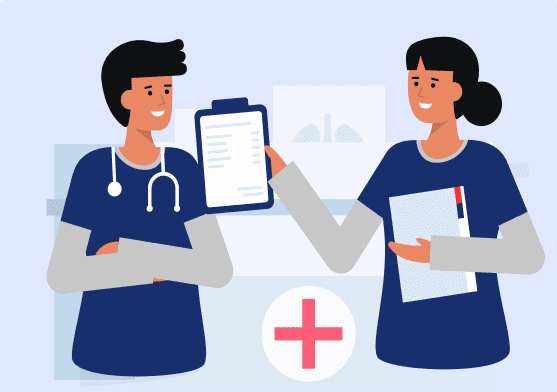




A.S. in Radiologic Technology Program Outline
| Course Number | Title | Clock Hours | Quarter Credit Hours |
|---|---|---|---|
| GE 011 | Anatomy & Physiology | 56.0 | 5.5 |
| GE 110 | Critical Thinking | 45.0 | 4.5 |
| GE 112 | Algebra 1 | 45.0 | 4.5 |
| GE 201 | Introduction to Sociology | 45.0 | 4.5 |
| GE 222 | English Reading & Composition | 45.0 | 4.5 |
| GEH 020 | Medical Terminology | 18.0 | 1.5 |
| RT 110C | Clinical Practice I | 128.0 | 4.0 |
| RT 111 | Radiologic Patient Care | 42.0 | 4.0 |
| RT 112 | Radiation Physics and Exposure | 58.0 | 5.0 |
| RT 113 | Radiographic Procedures I | 48.0 | 4.5 |
| RT 113L | Radiographic Procedures I Lab | 30.0 | 1.5 |
| RT 120C | Clinical Practice II | 168.0 | 5.5 |
| RT 121 | Radiation Protection and Biology | 50.0 | 5.0 |
| RT 122 | Digital Imaging | 52.0 | 4.5 |
| RT 123 | Radiographic Procedures II | 48.0 | 4.5 |
| RT 123L | Radiographic Procedures II Lab | 30.0 | 1.5 |
| RT 130C | Clinical Practice III | 176.0 | 5.5 |
| RT 131 | Radiographic Physics II and Fluoroscopy | 48.0 | 4.5 |
| RT 132 | Ethics and Law in Radiography | 24.0 | 2.0 |
| RT 133 | Radiographic Procedures III | 45.0 | 4.5 |
| RT 133L | Radiographic Procedures III Lab | 33.0 | 1.5 |
| RT 140C | Clinical Practice IV | 192.0 | 6.0 |
| RT 142 | Radiographic Pathology | 48.0 | 4.5 |
| RT 143 | Radiologic Procedures IV | 45.0 | 4.5 |
| RT 143L | Radiologic Procedures IV Lab | 33.0 | 1.5 |
| RT 250C | Clinical Practice V | 280.0 | 9.0 |
| RT 251 | Radiographic Pharmacology and Venipuncture | 36.0 | 3.0 |
| RT 252 | Cross Sectional Anatomy | 40.0 | 4.0 |
| RT 260C | Clinical Practice VI | 240.0 | 8.0 |
| RT 261 | Advanced Digital Imaging | 30.0 | 3.0 |
| RT 262 | Radiographic Advanced Procedures | 48.0 | 4.5 |
| RT 270C | Clinical Practice VII | 264.0 | 8.5 |
| RT 271 | Patient Care and Procedures Seminar | 48.0 | 4.5 |
| RT 272 -OR- RT 273 | Computed Tomography OR Mammography | 40.0 | 4.0 |
| RT 274 | Advanced Radiation Protection | 50.0 | 4.0 |
| RT 280C | Clinical Practice VIII | 280.0 | 9.0 |
| RT 281 | Image Production and Safety Seminar | 48.0 | 4.5 |
| RT 282 | Professional Development and Advancement | 18.0 | 1.5 |
| Total | 2,974.0 | 167.0 |
Applicants who possess a current State of California Limited Permit (License) in Chest, Extremities, and Torso Skeletal will receive credit granting for the following courses.
| Course Number | Title | Clock Hours | Quarter Credit Hours |
|---|---|---|---|
| GE 011 | Anatomy & Physiology I | 56.0 | 5.5 |
| GEH 020 | Medical Terminology | 18.0 | 1.5 |
| RT 111 | Radiologic Patient Care | 42.0 | 4.0 |
| RT 112 | Radiation Physics and Exposure | 58.0 | 5.0 |
| RT 113 | Radiographic Procedures I | 48.0 | 4.5 |
| RT 113L | Radiographic Procedures I Lab | 30.0 | 1.5 |
| RT 121 | Radiation Protection and Biology | 50.0 | 5.0 |
| RT 122 | Digital Imaging | 52.0 | 4.5 |
| RT 123 | Radiographic Procedures II | 48.0 | 4.5 |
| RT 123L | Radiographic Procedures II Lab | 30.0 | 1.5 |
| RT 110C | Clinical Practice I | 128.0 | 4.0 |
| RT 120C | Clinical Practice II | 168.0 | 5.5 |
| Total | 728.0 | 47.0 |
Read the A.S. in Radiologic Technology Program course descriptions.
A.S. in Radiologic Technology Clinical Training
Gurnick Academy of Medical Arts considers clinical experience one of the most vital parts of medical education. While attending radiology technology school, students must be rotated throughout our affiliated medical facilities. Students may be required to travel 100 miles (160.93 km) to their clinical site from the campus of attendance.
Additionally, if you have a facility interested in hosting you for your clinical rotations, you may apply for clinical site approval by completing and submitting the new clinical affiliate request form.
Job Outlook and Salary
The job outlook for radiologic technologists and technicians in California is positive, with a projected employment growth of 7.9% from 2020 to 2030, according to the Bureau of Labor Statistics (BLS). The aging population and advances in medical technology contribute to the demand for medical imaging services and, consequently, radiologic technologists and technicians who operate and maintain complex machines.
Hospitals and outpatient care centers are expected to be the largest employers of radiologic technologists and technicians in California. However, job opportunities may also be available in physician’s offices, diagnostic imaging centers, and other healthcare settings. Overall, the projected job growth in this field is higher than the national average, indicating a positive job outlook for those interested in pursuing a career in radiologic technology in California.
View the O*Net Online 29-2034.00 Radiologic Technologists and Technicians job profile for general information about the profession. Find information about the salary data in California and the major cities near the campuses where the program is offered.
Local Wages for Radiologic Technologists and Technicians in California

A.S. in RT Program Effectiveness Data
The following is the most current program effectiveness data. Our programmatic accreditation agency, the Joint Review Committee on Education in Radiologic Technology (JRCERT), defines and publishes this information. Click here to go directly to the JRCERT webpage.
Credentialing Examination
The number of students who pass, on the first attempt, the registry certification examination for radiography or an unrestricted state licensing examination, compared with the number of graduates who take the examination within six (6) months of graduation. The five-year average benchmark established by JRCERT is 75%.
| Credentialing Examination Rate Concord Campus (Year) | Number Passed on 1st Attempt Divided by Number Attempted Within Six (6) Months of Graduation (Results) |
|---|---|
| Year 1 - 2018 | 27 of 28 - 96% |
| Year 2 - 2019 | 19 of 20 - 95% |
| Year 3 - 2020 | 22 of 25 - 88% |
| Year 4 - 2021 | 21 of 23 - 91% |
| Year 5 - 2022 | 24 of 29 - 83% |
| Program 5-Year Average | 113 of 125 - 90% |
| Credentialing Examination Rate Sacramento Campus (Year) | Number Passed on 1st Attempt Divided by Number Attempted Within Six (6) Months of Graduation (Results) |
|---|---|
| Year 1 - 2018 | N/A |
| Year 2 - 2019 | 19 of 20 - 95% |
| Year 3 - 2020 | 22 of 23 - 96% |
| Year 4 - 2021 | 33 of 33 - 100% |
| Year 5 - 2022 | 26 of 26 - 100% |
| Program 5-Year Average | 100 of 102 - 98% |
Job Placement
The number of graduates employed in the radiologic sciences compared to those actively seeking radiologic sciences employment within twelve (12) months of graduating. The five-year average benchmark established by JRCERT is 75%.
| Job Placement Rate Concord Campus (Year) | Number Employed Divided by Number Actively Seeking Employment* within 12 Months of Graduation (Results) |
|---|---|
| Year 1 - 2018 | 26 of 26 - 100% |
| Year 2 - 2019 | 19 of 19 - 100% |
| Year 3 - 2020 | 25 of 25 - 100% |
| Year 4 - 2021 | 21 of 21 - 100% |
| Year 5 - 2022 | 26 of 26 - 100% |
| Program 5-Year Average | 117 of 117 - 100% |
| Job Placement Rate Sacramento Campus (Year) | Number Employed Divided by Number Actively Seeking Employment* within 12 Months of Graduation (Results) |
|---|---|
| Year 1 - 2018 | N/A |
| Year 2 - 2019 | 19 of 19 - 100% |
| Year 3 - 2020 | 23 of 23 - 100% |
| Year 4 - 2021 | 31 of 31 - 100% |
| Year 5 - 2022 | 26 of 26 - 100% |
| Program 5-Year Average | 99 of 99 - 100% |
*“Not Actively Seeking Employment” is defined as:
1) Graduates failing to communicate with program officials regarding employment status after multiple attempts;
2) Graduates unwilling to seek employment that requires relocation;
3) Graduates unwilling to accept employment due to salary or hours;
4) Graduates on active military duty; OR
5) Graduates continuing education.
Program Completion
The number of students who complete the program within the stated program length. The annual benchmark established by the program is 80%.
| Program Completion Rate Concord Campus (Year) | Number Graduated Divided by Number Started the Program (Results) |
|---|---|
| Year 1 - 2022 | 29 of 30 - 97% |
| Annual Completion Rate | 29 of 30 - 97% |
| Program Completion Rate Sacramento Campus (Year) | Number Graduated Divided by Number Started the Program (Results) |
|---|---|
| Year 1 - 2022 | 26 of 27 - 96% |
| Annual Completion Rate | 26 of 27 - 96% |
Accreditation and Approval
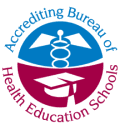
Gurnick Academy of Medical Arts holds national institutional accreditation by the Accrediting Bureau of Health Education Schools (ABHES). ABHES accreditation does not include continuing education courses.
ABHES Mailing Address:
6116 Executive Blvd., Suite 730
North Bethesda, MD 20852
ABHES Phone: 301-291-7550
ABHES Email: Info
ABHES Website: abhes.org
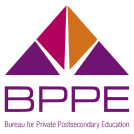
Gurnick Academy of Medical Arts is a private institution approved to operate by the California Bureau for Private Postsecondary Education. Approval to operate means the institution is compliant with the minimum standards in the California Private Postsecondary Education Act (CPPEA) of 2009 (as amended) and Division 7.5 of Title 5 of the California Code of Regulations. CPPEA governs the Bureau for Private Postsecondary Education.
The Office of Student Assistance and Relief is available to support prospective students, current students, or past students of private postsecondary educational institutions in making informed decisions, understanding their rights, and navigating available services and relief options. The office may be reached by calling (888) 370- 7589, option #5, or by visiting osar.bppe.ca.gov.
BPPE Mailing Address:
1747 N. Market Blvd., Suite 225
Sacramento, CA 95834
BPPE Phone: 888-370-7589
BPPE Email: General
BPPE Website: bppe.ca.gov
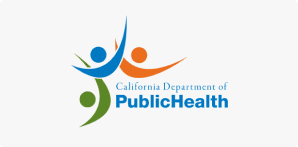
The California Department of Public Health, Radiologic Health Branch (CDPH-RHB), approves Gurnick Academy of Medical Arts for the X-ray Technician with Medical Assistant Skills Program.
CDPH-RBH Mailing Address:
P.O. Box 997377, MS 0500
Sacramento, CA 95899
CDPH-RBH Phone: 916-558-1784
CDPH-RHB Website: cdph.ca.gov
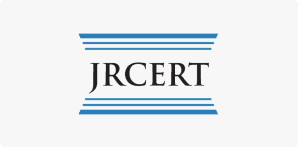
Gurnick Academy of Medical Arts is approved and accredited by the Joint Review Committee on Education in Radiologic Technology (JRCERT) to provide the A.S. in Radiologic Technology program.
Los Angeles (Van Nuys) program was JRCERT accredited on 06-25-2019 with an 8-year award.
JRCERT Mailing Address:
20 North Wacker Drive, Suite 2850
Chicago, IL 60606
JRCERT Phone: 312-704-5300
JRCERT Email: Info
JRCERT Website: jrcert.org
Certification for Radiologic Technologists in California
Find more information about the Licensure, Certification, and Registry Disclaimer in the school catalog.
Click here for license examination pass rates.
*Gurnick Academy of Medical Arts has not determined if any programs fulfill the educational requirements for specific professional licensure or certification required for employment outside California unless identified by the program below. It is recommended that students located in or planning to relocate to a state apart from the program’s physical campus should research any certification or employment requirements for their intended state.
Financial Aid

Gurnick Academy of Medical Arts aims to help every student obtain Financial Aid* to attend their chosen program. Gurnick Academy of Medical Arts participates in various federal and state student financial assistance programs.
The financial aid programs are designed to assist students with inadequate financial resources to meet their education’s total cost. Each campus has a Financial Aid Advisor who can help students with any financial aid questions.
For more information, please visit our Financial Aid page.
*for those who qualify
Student’s and Graduate’s Testimonials

Chinh Tang
A.S. in RT Program
The different experiences I have gained through my clinical rotations have prepared me to work in any environment.

Kathy Nguyen
A.S. in RT Program
I have spoken out about my interest in learning other modalities, and the school has supported my ambitions.
Gurnick Academy has helped me jump into cross-training as a student to reach my goal of becoming a multi-modality technologist.

Carlos Martinez
A.S. in RT Program
Over the past two years, I have learned so much and met so many wonderful people who have helped me along the way, from classmates to instructors, and technologists.
A.S. in Radiologic Technology Program FAQs
Please choose from the dropdown to review a category of FAQs
-
You can fill out our online contact form to have information mailed to you or a school representative contact you. Or call us at 1-877-GURNICK.
-
The first step is to submit an online application.
-
For more information, please review the Admission Requirements.
-
Please find more info about the Foreign Transcript and Diploma Evaluations process.
-
Learn about the application dates and deadlines.
-
To qualify for the A.S. in Radiologic Technology program, you must pass the CCAT exam.
-
All applicants, regardless of degree or background, must pass the entrance exam before admission into the program.
-
No. You don’t need to take any prerequisite courses.
-
Learn about the Radiologic Technology Program Length and Schedule.
-
Learn more about the program’s Accreditation.
-
The Radiologic Technology program is full-time.
-
We currently do not offer night classes for the Radiologic Technology program.
-
View the Addendum to review all scheduled breaks during the school year.
-
Please find more info about remediation in our Catalog and Addendum.
-
More information can be provided by contacting the Admissions Department.
-
An externship will be provided for all of our students.
-
All externships are unpaid.
-
For a cost breakdown, please see the Program Fees section.
-
Financial Aid is available for those who qualify. Gurnick Academy of Medical Arts participates in various federal and state student financial assistance programs.
-
The A.S. in RT program is an Associate of Science degree program.
-
Please find more info about Licensure, Certification, and Registry Disclaimer policy in our Catalog and Addendum.
-
Test preparation is strongly emphasized throughout the Gurnick Academy of Medical Arts curriculum.
-
We may assist with job placements for all students who complete the program. However, we cannot guarantee employment.
Have Questions? We are here to help!
Apply Now Form
If you are a person who is deaf, hard of hearing, or speech-disabled, please Dial 711 to place a call through California Relay.
